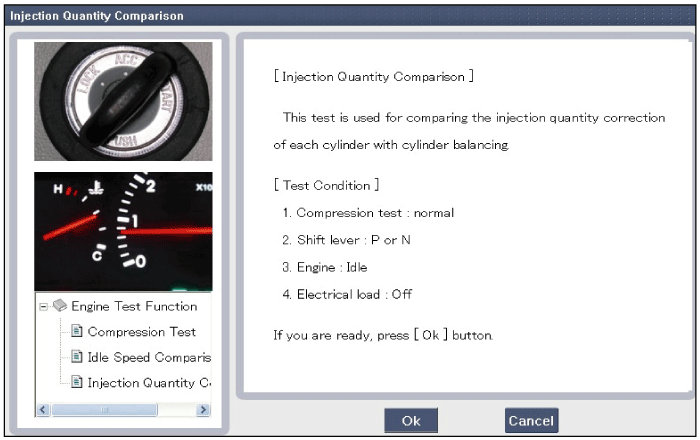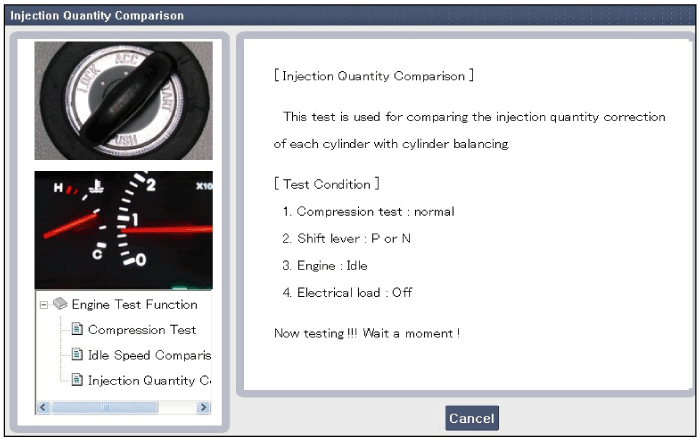Remove the noise cover assembly (A).
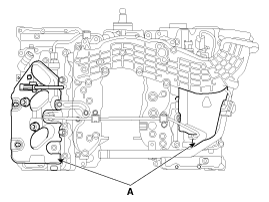
As the Piezo-Injector operates under maximum DC 200V, there may be a risk of an electric shock caused by shorted control line etc. So when repairing the injector or its wiring, disconnect the battery negative (-) terminal from the battery and wait for about 30 seconds.
Common Rail Fuel Injection System operates with extremely high pressure (approximately 1,600bar), so never perform any work on injection system with engine running or within 30 seconds after the engine stops.
Keep cleanly the parts and the working area.
Pay attention to a foreign substance.
Just before installing injector, tube or hose, remove the protect-cap attached on them.
Do not remove injector except for special case.
When installing Injector
- Wash the contact area of the injector and replace the O-ring with a new one.
- Spread oil on the injector O-ring.
- To protect damage caused by shock, vertically insert the injector into the cylinder head.
When installing High Pressure Fuel Pipe
- Do not use again the used high pressure fuel pipe.
- Install the flange nut correctly.
Turn ignition switch OFF and disconnect the negative (-) battery cable.
Remove the noise cover assembly (A).

Disconnect the injector connector (A).
Disconnect the injector return line (B).
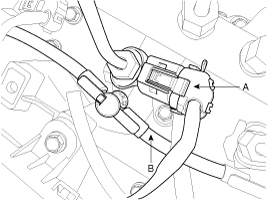
Before connecting the injector return line or after disconnecting the injector return line, check that the plug bush was completely raised from the plug. Otherwise fuel will leak around the injector’s nipple because of broken plug.
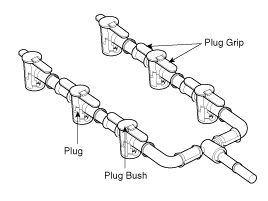
[DISCONNECTION-INJECTOR RETURN LINE]
Pull the plug bush (B) upward with the plug grip (A) pressed.
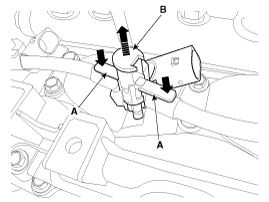
Seize the return line on both sides of the plug, and then disconnect the plug upward from the injector nipple.
[CONNECTION-INJECTOR RETURN LINE]
With the plug bush (A) fully raised, vertically install the plug to the injector nipple until "Click" sound generates.
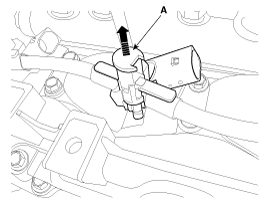
Press the plug bush downward until "Click" sound generates.
Disconnect the high pressure fuel pipe (A).
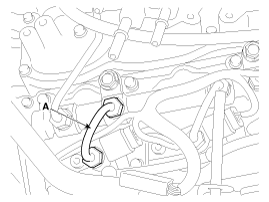
Unscrew the injector clamp bolt (A), and then remove the injector.
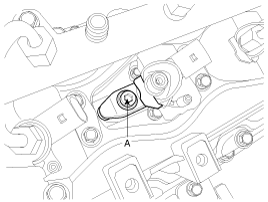
If the injector adheres to the cylinder head, use the Special Service Tool (SST No.: 09351-4A300).
Installation is reverse of removal.
1. When installing the high pressure fuel pipe, apply the specified tightening torques with the special service tool [SST No.: 09314-3A000].
2. When installing the high pressure fuel pipe connecting the common rail and injector, follow the below procedure.
Temporarily install the nuts on common rail and injector
Install the injector side and common rail side sequentially
Injector clamp installation bolt:
24.5 ~ 26.5 N·m (2.5 ~ 2.7 kgf.m, 18.1 ~ 19.5 lb-ft)
High pressure fuel pipe installation nut:
24.5 ~ 28.4 N·m (2.5 ~ 2.9 kgf.m, 18.1 ~ 21.0 lb-ft)
Noise cover installation bolt:
9.8 ~ 11.8 N.m (1.0 ~ 1.2 kgf.m, 7.2 ~ 8.7 lb-ft)
In case of bad start after reinstalling (replacing) the injector, the high pressure fuel pump or common rail, bleed air in high pressure fuel circuit.
After replacing the part, install the others except the injector #5 side high pressure fuel pipe (A).
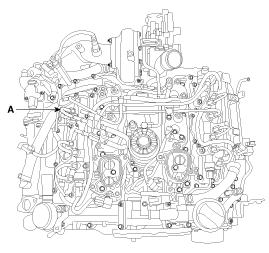
Install the high pressure fuel pipe (A: 31421-3A000) to the injecter #5 side on the common rail, and place the cup (B) at the end of the pipe.
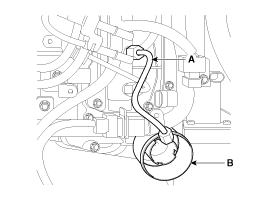
Check to bleed fuel out at the pipe after cranking the engine several times and then, remove the high pressure fuel pipe tightened temporarily.
Install new high pressure fuel pipe (A) to the injecter #5 side with specified torque.
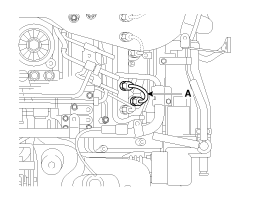
Check the high pressure fuel system for leakage after start the engine.
As the Piezo-Injector operates under maximum DC 200V, there may be a risk of an electric shock caused by shorted control line etc. So when repairing the injector or its wiring, disconnect the battery negative (-) terminal from the battery and wait for about 30 seconds.
Common Rail Fuel Injection System operates with extremely high pressure (approximately 1,600bar), so never perform any work on injection system with engine running or within 30 seconds after the engine stops.
Keep cleanly the parts and the working area.
Pay attention to a foreign substance.
Just before installing injector, tube or hose, remove the protect-cap attached on them.
Do not remove injector except for special case.
When installing Injector
- Wash the contact area of the injector and replace the O-ring with a new one.
- Spread oil on the injector O-ring.
- To protect damage caused by shock, vertically insert the injector into the cylinder head.
When installing High Pressure Fuel Pipe
- Do not use again the used high pressure fuel pipe.
- Install the flange nut correctly.
After replacing injector, MUST input the injector specific data (7 digits) of each cylinder into ECM with scan tool.
Remove the injector (Refer to "REMOVAL" procedure).
Install the injector (Refer to "INSTALLATION" procedure).
Perform "Injector Specific Data Input" procedure (Refer to "INJECTOR SPECIFIC DATA INPUT" procedure).
After replacing injector, MUST input the injector specific data (7 digit) of each cylinder into ECM with the GDS.
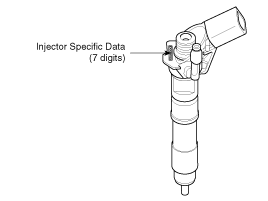
Turn ignition switch OFF.
Connect the GDS to Data Link Connector (DLC).
Turn ignition switch ON.
Select "Vehicle, Model year, Engine, System".
Select "Vehicle S/W Management".
Select "injector Specific Data".
Perform the procedure in accordance with the message.

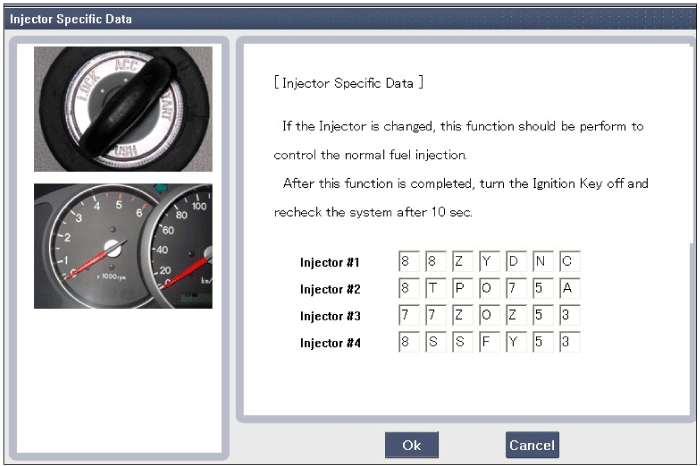
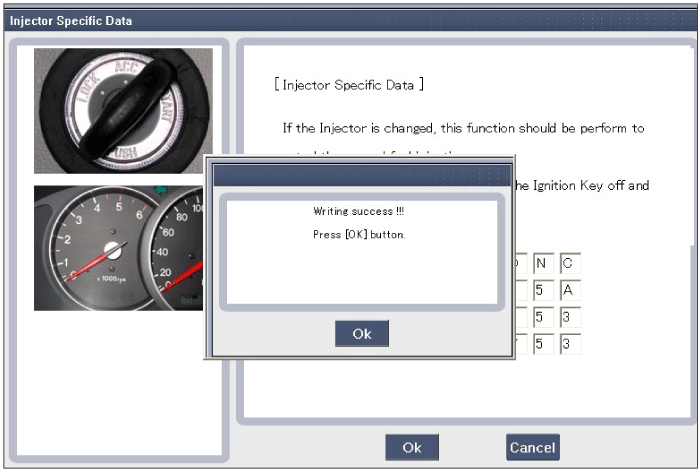
After selecting "OK" on the "Writing success" message, turn ignition switch OFF.
In about 10 seconds, turn ignition switch ON and recheck the injector specific data memorized in the ECM.
In case of failure, input the injector specific data (7 digits) into ECM again.
Turn ignition switch OFF.
Connect the GDS to Data Link Connector (DLC).
Turn ignition switch ON.
Select "Vehicle, Model year, Engine, System".
Select "Vehicle S/W Management".
Select "Engine Test Function".
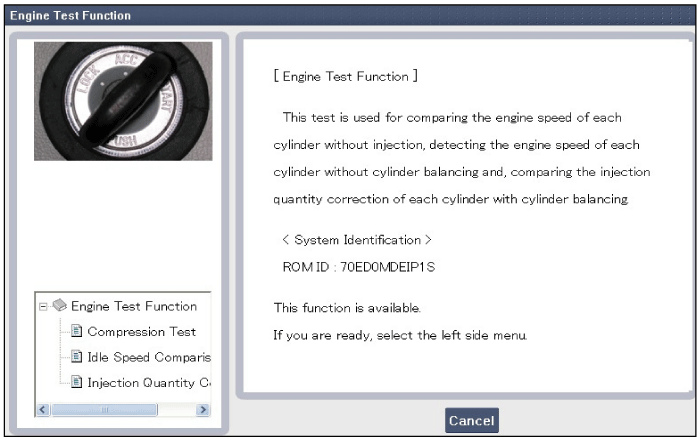
Select "Compression Test".
Perform the test in accordance with the message.
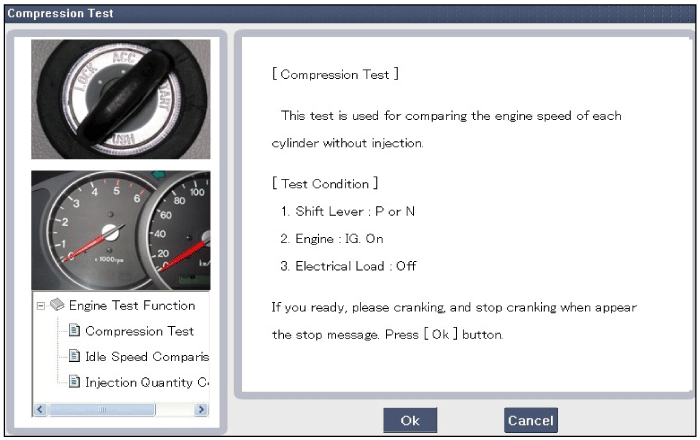
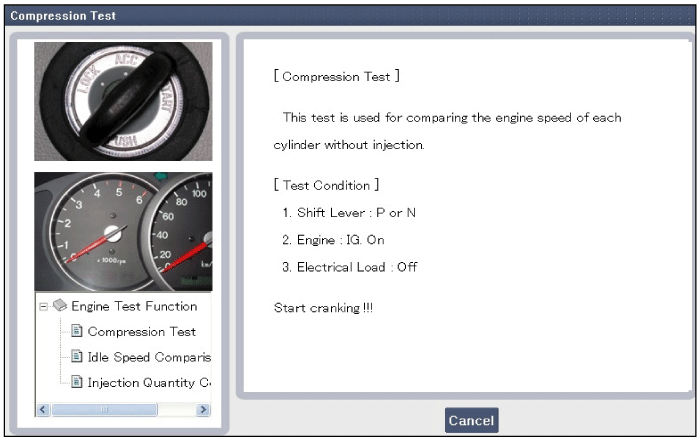
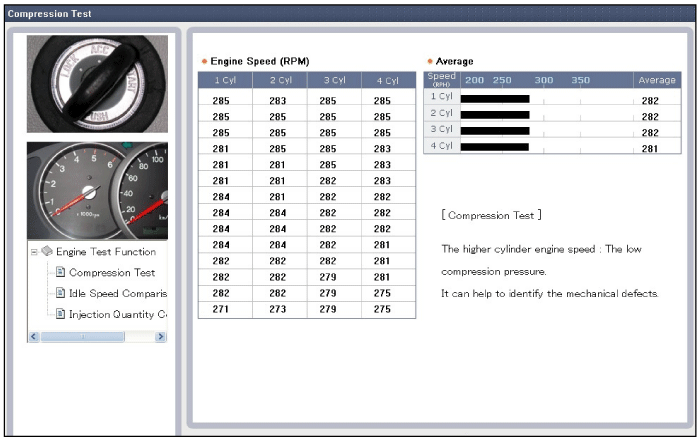
If a cylinder's engine speed is higher than the other cylinders, the cylinder's compression pressure is low.
Turn ignition switch OFF.
Connect the GDS to Data Link Connector (DLC).
Turn ignition switch ON.
Select "Vehicle, Model year, Engine, System".
Select "Vehicle S/W Management".
Select "Engine Test Function".

Select "Idle Speed Comparision".
Perform the test in accordance with the message.
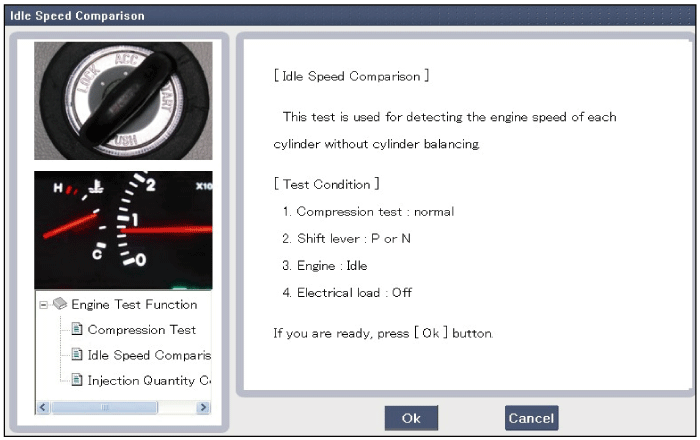
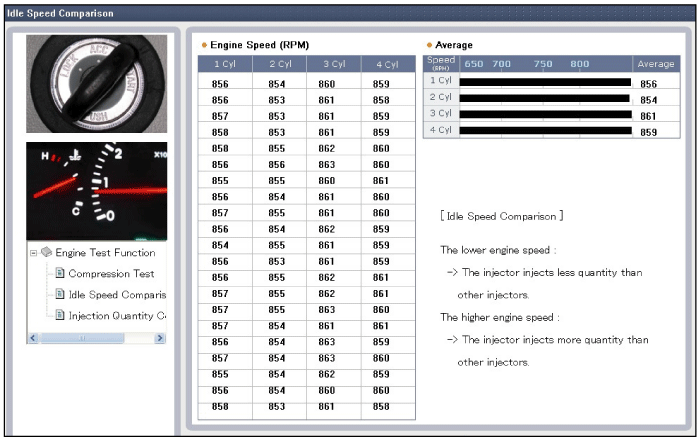
Turn ignition switch OFF.
Connect the GDS to Data Link Connector (DLC).
Turn ignition switch ON.
Select "Vehicle, Model year, Engine, System".
Select "Vehicle S/W Management".
Select "Engine Test Function".

Select "Injection Quantity Comparison".
Perform the test in accordance with the message.
